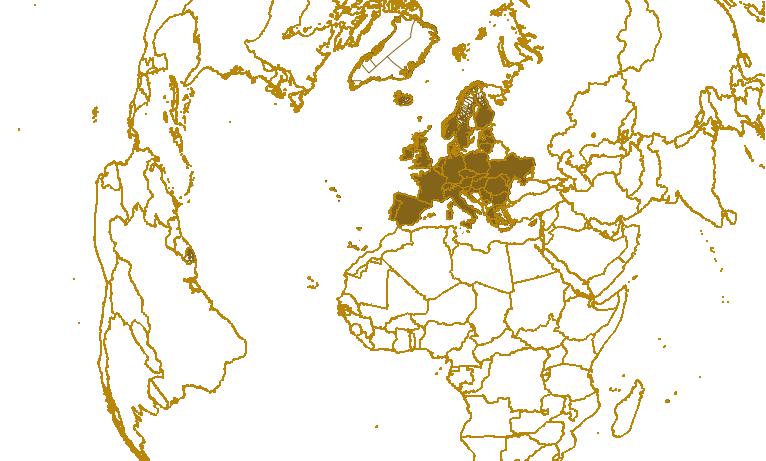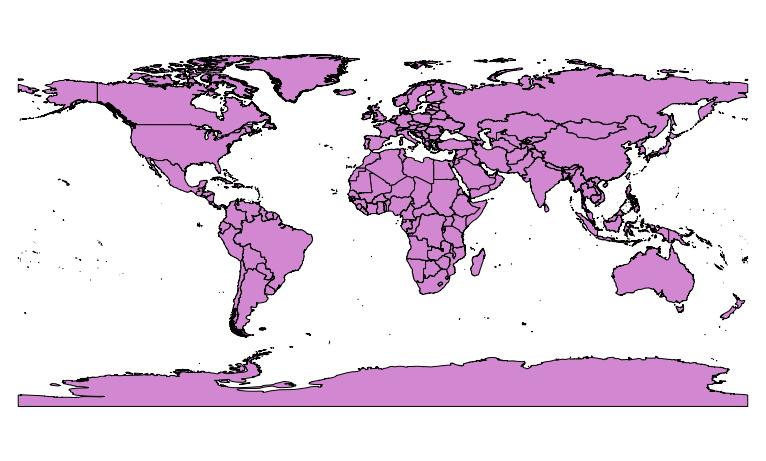administrative boundary
Type of resources
Available actions
Topics
INSPIRE themes
Keywords
Contact for the resource
Provided by
Years
Formats
Representation types
Update frequencies
status
Scale
Resolution
-

This data set shows pan European administrative boundaries down to commune level version 2010. Communes are equivalent to Local Administrative Units, level 2 (LAU2), except for GR (LAU1) and SI (so called LAU3). The Nomenclature of Territorial Units for Statistics (NUTS) and the LAU nomenclature are hierarchical classifications of statistical regions that together subdivide the EU economic territory into regions of five different levels (NUTS 1, 2 and 3 and LAU 1, 2, respectively, moving from larger to smaller territorial units). The NUTS classification has been officially established through Regulation (EC) No 1059/2003 of the European Parliament and of the Council and amendments. A non official NUTS-like classification has been defined for the non-EU countries. The LAU classification is not covered by any legislative act. An introduction to the NUTS classification is available here: http://epp.eurostat.ec.europa.eu/portal/page/portal/nuts_nomenclature/introduction The data set is based on EuroBoundaryMap v. 5.0 from Eurogeographics. Geographical extent covers the European Union 27, EFTA countries, Croatia, Serbia (including Kosovo UNSCR 1244) Greenland, Moldova and Ukraine. The scale of the data set is 1:100 000. The data set (100K - 60M) is available to EEA due to EEA having a valid EBM v5.0 licence. These metadata are derived from the original metadata records available at Inspire@EC.
-

The Global Administrative Unit Layers (GAUL) is an initiative implemented by FAO within the EC-FAO Food Security Programme funded by the European Commission (http://www.foodsecinfoaction.org/News/news_06_06.htm). The GAUL aims at compiling and disseminating the most reliable spatial information on administrative units for all the countries in the world, providing a contribution to the standardization of the spatial dataset representing administrative units. The GAUL always maintains global layers with a unified coding system at country, first (e.g. regions) and second administrative levels (e.g. districts). In addition, when data is available, it provides layers on a country by country basis down to third, fourth and lowers levels. The GAUL is released once a year and the target beneficiary of the GAUL data is the UN community, the Universities and other authorized international and national institutions/agencies. Data might not be officially validated by authoritative national sources and can not be distributed to the general public. A disclaimer should always accompany any use of the GAUL data. About 21 countries have been updated respect to the previous release (see countries_updated.dbf). The GAUL keeps track of administrative units that has been changed, added or dismissed in the past for political causes. Changes implemented in different years are recorded in the GAUL on different layers. For this reason the GAUL product is not a single layer but a group of layers, named "GAUL Set" (see Gaul_Set.pdf). The original dataset containing Level 0 administrative units has been combined by EEA with some attributes data provided within GAUL in a separate file. No data from outside GAUL have been used and it is possible to reconstruct the original dataset by removing the extra attributes added.
-

This data set contains the administrative boundaries at country level of the world and is based on the geometry from EBM v12.x. of EuroGeographics for the members of Eurogeographics, the Global Administrative Units Layer (2015) from FAO (UN) and geometry from the Turkish National Statistical Office. This dataset consists of 2 feature classes (regions, boundaries) per scale level and there are 6 different scale levels (100K, 1M, 3M, 10M, 20M and 60M). The public dataset is available at 1M, 3M, 10M, 20M, 60M, while the full dataset at 100K is restricted. This metadata only refers to the full dataset (polygon) at 100k (CNTR_RG_100K_2016 in the GISCO database) and shall only be used internally by the EEA. This metadata has been slightly adapted from the original metadata file provided by Eurostat (European Commission) and is to be used only for internal EEA purposes. For reference, the original metadata file provided by ESTAT (CNTR_2016.xml) is provided together with the dataset. The public dataset is available for download on http://ec.europa.eu/eurostat/cache/GISCO/distribution/v2/countries/countries-2016-files.html
-

This dataset adds the delineation of a Kosovo under United Nations Security Council Resolution 1244/99 feature to the administrative units at country level from 2010 dataset provided by GISCO. The country identifier (cntr_id) for the Kosovo under United Nations Security Council Resolution 1244/99 feature is set to 'XK' and its associated object_id to 999. Users should pay attention to the existence of another feature with cntr_id set to 'XK' in Africa (associated object_id: 245). The Kosovo under United Nations Security Council Resolution 1244/99 feature has been delineated using the boundaries of the following communes extracted from the administrative units at commune level from 2010 provided by GISCO: comm_id --------- RS01, RS02, RS03, RS04, RS05, RS06, RS07, RS08, RS09, RS10, RS11, RS12, RS13, RS14, RS15, RS16, RS17, RS18, RS19, RS20, RS21, RS22, RS23, RS24, RS25, RS26, RS27, RS28, RS29, RS30, RS31, RS32, RS33, RS34, RS35, RS36, RS37
-

This dataset adds the delineation of a Kosovo under United Nations Security Council Resolution 1244/99 feature to the administrative units at country level from 2010 dataset provided by GISCO. The country identifier (cntr_id) for the Kosovo under United Nations Security Council Resolution 1244/99 feature is set to 'XK' and its associated object_id to 999. Users should pay attention to the existence of another feature with cntr_id set to 'XK' in Africa (associated object_id: 245). The Kosovo under United Nations Security Council Resolution 1244/99 feature has been delineated using the boundaries of the following communes extracted from the administrative units at commune level from 2010 provided by GISCO: comm_id --------- RS01, RS02, RS03, RS04, RS05, RS06, RS07, RS08, RS09, RS10, RS11, RS12, RS13, RS14, RS15, RS16, RS17, RS18, RS19, RS20, RS21, RS22, RS23, RS24, RS25, RS26, RS27, RS28, RS29, RS30, RS31, RS32, RS33, RS34, RS35, RS36, RS37
-

Under the law of the sea, an exclusive economic zone (EEZ) is a sea zone over which a state has special rights over the exploration and use of marine resources. It stretches from the seaward edge of the state territorial sea out to 200 nautical miles from its coast. This dataset has been retrieved from the Flanders Marine Institute.
-

GISCO is a Eurostat service which promotes and stimulates the use of GIS within the European Statistical System and the Commission. It is responsible for the management and dissemination of the Geographical reference database of the Commission. It produces maps, spatial analysis, promotes geo-referencing of statistics and provides user support for Commission users of GIS. GISCO is one of the leaders of the INSPIRE initiative, supporting the implementation of the directive for the establishment of a European Spatial Data Infrastructure. The datasets extracted from GISCO in August 2012 are for the year 2010: + Administrative boundaries at country level + Coastlines + Communes + EEZ + NUTS These metadata are derived from the original metadata records available at Inspire@EC.
-

This dataset maps NUTS3 regions (Nomenclature of territorial units for statistics) or where not available: Administrative Units from EuroBoundaryMap onto an Inspire compliant grid with 100m resolution. This dataset is to be used with its associated legend file (EBMv5_100m.legend_final).
-

This data set represents the coastlines of the world and is based on the European Boundary Map v5.0. from EuroGeographics (scale 1:100.000) (for Eurogeographics members) and the Global Administrative Unit Layers (GAUL) 2008 from FAO (UN) (scale 1:1M and smaller). The data set (100K - 60M) is available to EEA due to EEA having a valid EBM v5.0 licence. These metadata are derived from the original metadata records available at Inspire@EC.
-

This data set contains the administrative boundaries at country level of the world and is based on the geometry from EBM v8.x. of EuroGeographics for the members of Eurogeographics, the Global Administrative Units Layer (2013) from FAO (UN) and geometry from the Turkish National Statistical Office. This dataset consists of 2 feature classes (regions, boundaries) per scale level and there are 6 different scale levels (100K, 1M, 3M, 10M, 20M and 60M). The public dataset is available at 1M, 3M, 10M, 20M, 60M, while the full dataset at 100K is restricted. This metadata only refers to the full dataset at 100k and shall only be used internally by the EEA. This metadata has been slightly adapted from the original metadata file provided by Eurostat (European Commission) and is to be used only for internal EEA purposes. For reference, the original metadata file provided by ESTAT (CNTR_2013.xml) is provided together with the dataset. The public dataset is available for download on http://ec.europa.eu/eurostat/web/gisco/geodata/reference-data/administrative-units-statistical-units/countries#countries13.
 RUC Geo-Data catalogue
RUC Geo-Data catalogue